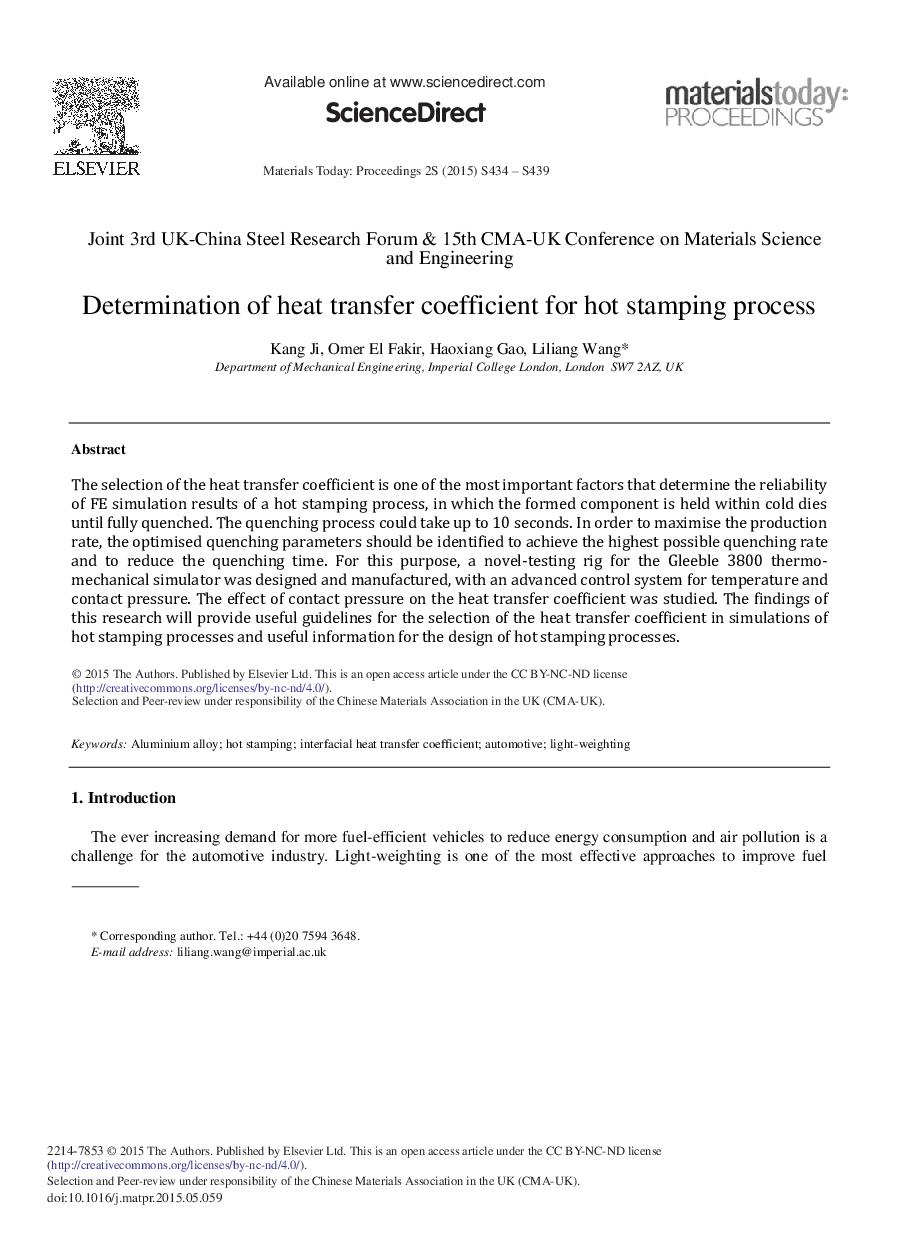| Article ID | Journal | Published Year | Pages | File Type |
|---|---|---|---|---|
| 1631219 | Materials Today: Proceedings | 2015 | 6 Pages |
The selection of the heat transfer coefficient is one of the most important factors that determine the reliability of FE simulation results of a hot stamping process, in which the formed component is held within cold dies until fully quenched. The quenching process could take up to 10 seconds. In order to maximise the production rate, the optimised quenching parameters should be identified to achieve the highest possible quenching rate and to reduce the quenching time. For this purpose, a novel-testing rig for the Gleeble 3800 thermo- mechanical simulator was designed and manufactured, with an advanced control system for temperature and contact pressure. The effect of contact pressure on the heat transfer coefficient was studied. The findings of this research will provide useful guidelines for the selection of the heat transfer coefficient in simulations of hot stamping processes and useful information for the design of hot stamping processes.
